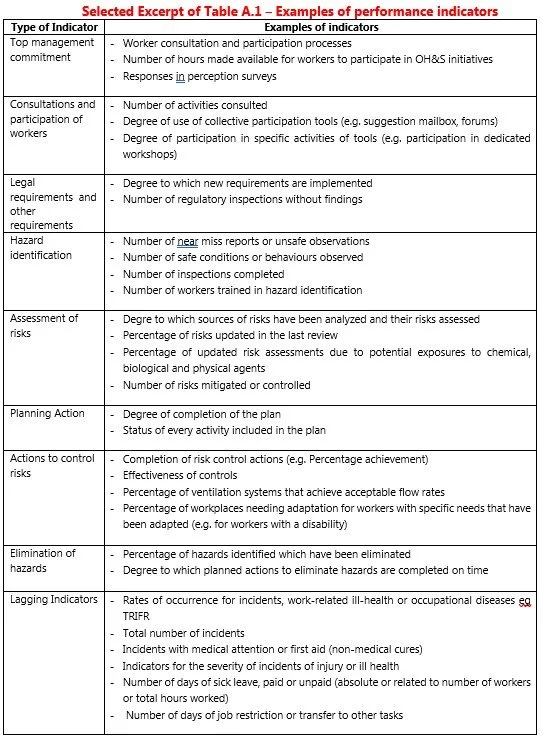New ISO Standard for Measuring Safety
The out-of-date Australian Standard, AS 1885: 1990, long used to measure safety performance has finally been withdrawn from sale. The old standard provided the calculation of the then popular lost-time injury frequency rate (LTIFR). Total recordable injury frequency rate (TRIFR) is a more recent invention, originating from the USA.
New ISO Standard
The good news, however, is that a new International (ISO) Standard has been released.
ISO 45,004: 2024 entitled Occupational Health and Safety Management – Guidelines on Performance Evaluation.
This ISO standard recognises that no one set of safety performance indicators will fulfill the needs of all organisations, and therefore allows each business to select the most relevant measures for their circumstances. The idea being that the organisation can still track improvement overtime and identify where their strengths and weaknesses are.
Of course, benchmarking against other businesses or industries will require selecting the same indicators for comparison. The ISO standard also cautions users to take into account that some indicators may not stay relevant over longer periods of time, and the organisation may need to adjust their performance measures to suit the circumstances.
ISO 45,004 offers suggestions for performance indicators ranging across a wide range of topics as exampled below:
Pre & Post Activity Reviews Inspections H&S Meetings
Exposure Assessments Focus Groups Surveys
Occupational Health Surveillance Interviews Audits
Traditional Injury & Ill-health Incidents & Investigations Mgt Reviews
The ISO standard formalises the lead and lag indicator category and provides tables with examples of various types of indicators and uses, per excerpts below.
Benchmarking Safety Performance
Here at Safety Action, we periodically conduct a benchmarking survey with our clients and friends to help identify activities that are more effective at generating improved safety performance, as well as providing benchmarks for comparison against industry averages or other businesses.
Key Findings
An example of some of the key findings from our 2023 benchmarking report by Dr Stephen Weber of our team include interesting things like:
The number of safety personnel per 100 employees rose about 40%, suggesting performance of participants will likely improve, as our benchmark indicators deteriorated when the number of safety personnel dropped in earlier surveys.
Medical treatment and lost-time injury (MTI and LTI) rates remained stable.
Days lost per 100 employees increased from previous survey, suggesting more psychological and stress claims which typically have higher severity rates.
The number of hazards fixed in less than 60 days declined for the first time, suggesting less safety activity or lower priority in the survey period eg ongoing resource pressure from the Covid era.
Most Effective Safety Activities
Dr Weber also identified the key safety activities linked to lower total recordable incident frequency rate (TRIFR) lag indicator, which included:
All managers and supervisors trained in safety leadership.
New managers and supervisors receive comprehensive briefing on the safety program, and their role and safety responsibilities.
Organisations that have non-negotiable (core) safety rules and are passionate about them.
Organisations that conduct employee safety climate surveys, and share the results with the board eg what gets measured and noticed gets done.
To express your interest in participating in our next benchmarking survey, simply call 03 8544 4300 or email us.
The survey is quick and easy to complete with normal safety data readily available in most organisations. Click here to see the last benchmarking survey questionnaire.



